Multi-Frequency GPR Microwave Imaging of Sparse Targets through a Multi-Task Bayesian Compressive Sensing Approach
Abstract
:1. Introduction
2. Mathematical Formulation
Inverse Problem Solution Approach
3. Numerical Assessment
4. Conclusions
Author Contributions
Funding
Institutional Review Board Statement
Informed Consent Statement
Data Availability Statement
Acknowledgments
Conflicts of Interest
References
- Persico, R. Introduction to Ground Penetrating Radar: Inverse Scattering and Data Processing; Wiley-IEEE Press: London, UK, 2014. [Google Scholar]
- Baussard, A.; Miller, E.L.; Lesselier, D. Adaptive multiscale reconstruction of buried objects. Inverse Prob. 2004, 20, S1–S15. [Google Scholar] [CrossRef]
- Li, M.; Abubakar, A.; Habashy, T.M. Application of a two-and-half dimensional model-based algorithm to crosswell electromagnetic data inversion. Inverse Prob. 2010, 26, 074013. [Google Scholar] [CrossRef]
- Abubakar, A.; Habashy, T.M.; Li, M.; Liu, J. Inversion algorithm for large-scale geophysical electromagnetic measurements. Inverse Prob. 2009, 25, 123012. [Google Scholar] [CrossRef]
- Meincke, P. Linear GPR inversion for lossy soil and a planar air-soil interface. IEEE Trans. Geosci. Remote Sens. 2001, 39, 2713–2721. [Google Scholar] [CrossRef]
- Salucci, M.; Gelmini, A.; Poli, L.; Oliveri, G.; Massa, A. Progressive compressive sensing for exploiting frequency-diversity in GPR imaging. J. Electromagn. Waves Appl. 2018, 32, 1164–1193. [Google Scholar] [CrossRef]
- Salucci, M.; Oliveri, G.; Massa, A. GPR prospecting through an inverse scattering frequency-hopping multi-focusing approach. IEEE Trans. Geosci. Remote Sens. 2015, 53, 6573–6592. [Google Scholar] [CrossRef]
- Salucci, M.; Poli, L.; Anselmi, N.; Massa, A. Multifrequency particle swarm optimization for enhanced multiresolution GPR microwave imaging. IEEE Trans. Geosci. Remote Sens. 2017, 55, 1305–1317. [Google Scholar] [CrossRef]
- Salucci, M.; Estatico, C.; Fedeli, A.; Oliveri, G.; Pastorino, M.; Povoli, S.; Randazzo, A.; Rocca, P. 2D TM GPR imaging through a multi-scaling multi-frequency approach in Lp-spaces. IEEE Trans. Geosci. Remote Sens. 2021. [Google Scholar] [CrossRef]
- Chen, X. Computational Methods for Electromagnetic Inverse Scattering; Wiley: Hoboken, NJ, USA, 2018. [Google Scholar]
- Massa, A.; Rocca, P.; Oliveri, G. Compressive sensing in electromagnetics—A review. IEEE Antennas Propag. Mag. 2015, 57, 224–238. [Google Scholar] [CrossRef]
- Ambrosanio, M.; Pascazio, V. A compressive-sensing-based approach for the detection and characterization of buried objects. IEEE J Selected Top. Appl. Earth Observ. Remote Sens. 2015, 8, 3386–3395. [Google Scholar] [CrossRef]
- Sun, Y.; Qu, L.; Zhang, S.; Yin, Y. MT-BCS-based two-dimensional diffraction tomographic GPR imaging algorithm with multiview-multistatic configuration. IEEE Geosci. Remote Sens. Lett. 2016, 13, 831–835. [Google Scholar] [CrossRef]
- Ji, S.; Dunson, D.; Carin, L. Multitask compressive sensing. IEEE Trans. Signal Process. 2009, 57, 92–106. [Google Scholar] [CrossRef]
- Gurbuz, A.C.; McClellan, J.H.; Scott, W.R. A compressive sensing data acquisition and imaging method for stepped frequency GPRs. IEEE Trans. Signal Process. 2009, 57, 2640–2650. [Google Scholar] [CrossRef]
- Tuncer, M.A.C.; Gurbuz, A.C. Ground reflection removal in compressive sensing ground penetrating radars. IEEE Geosci. Remote Sens. Lett. 2012, 9, 23–27. [Google Scholar] [CrossRef]
- Qu, L.; Yang, T. Investigation of air/ground reflection and antenna beamwidth for compressive sensing SFCW GPR migration imaging. IEEE Trans. Geosci. Remote Sens. 2012, 50, 3143–3149. [Google Scholar] [CrossRef]
- Suksmono, A.B.; Bharata, E.; Lestari, A.A.; Yarovoy, A.G.; Ligthart, L.P. Compressive stepped-frequency continuous-wave ground-penetrating radar. IEEE Geosci. Remote Sens. Lett. 2010, 7, 665–669. [Google Scholar] [CrossRef]
- Karlina, R.; Sato, M. Model-based Compressive Sensing applied to landmine detection by GPR. IEICE Trans. Electron. 2016, 99, 44–51. [Google Scholar] [CrossRef] [Green Version]
- Giannopoulos A, Modelling ground penetrating radar by GprMax. Constr. Build. Mater. 2005, 19, 755–762. [CrossRef]
- Anselmi, N.; Oliveri, G.; Hannan, M.A.; Salucci, M.; Massa, A. Color compressive sensing imaging of arbitrary-shaped scatterers. IEEE Trans. Microw. Theory Tech. 2017, 65, 1986–1999. [Google Scholar] [CrossRef] [Green Version]

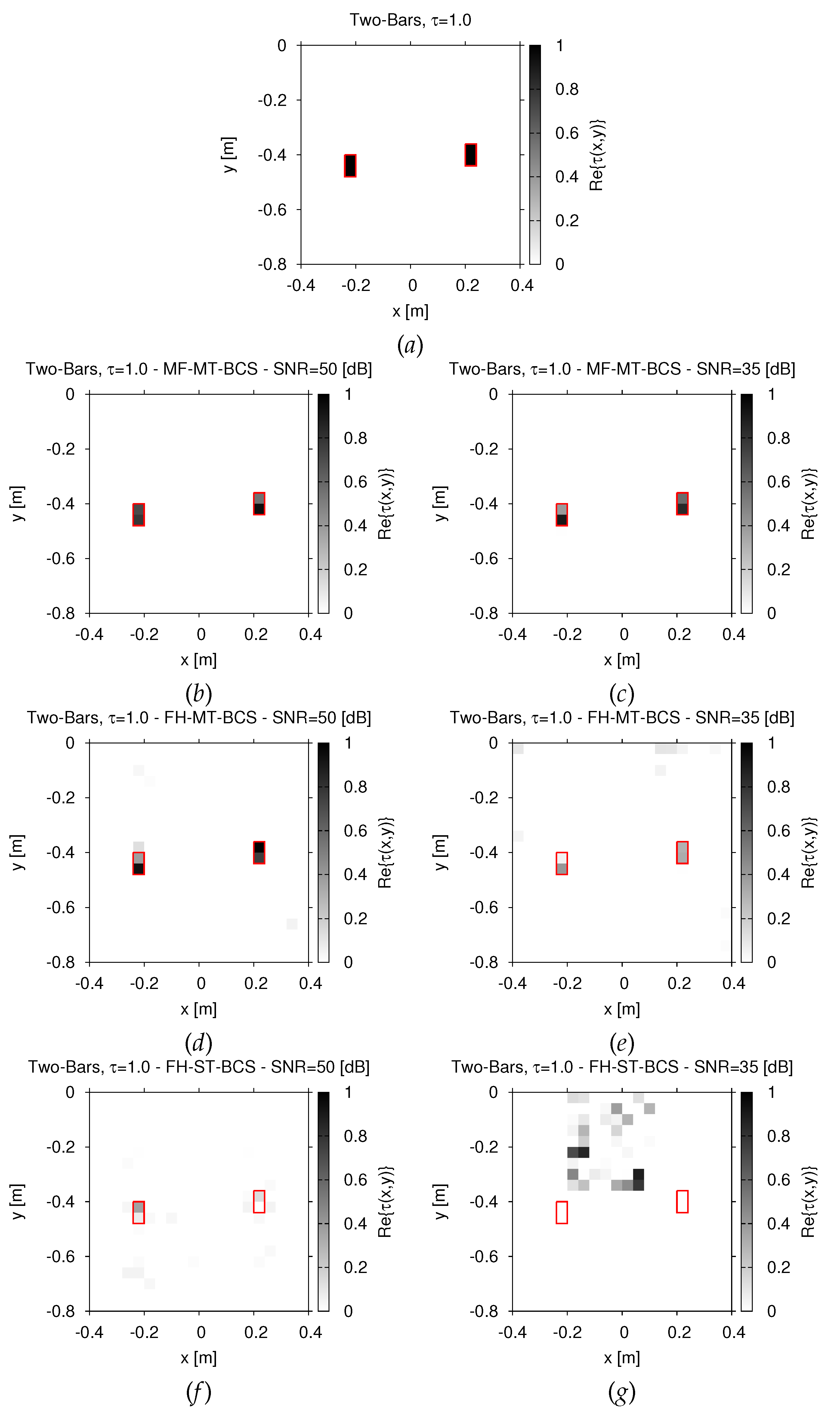
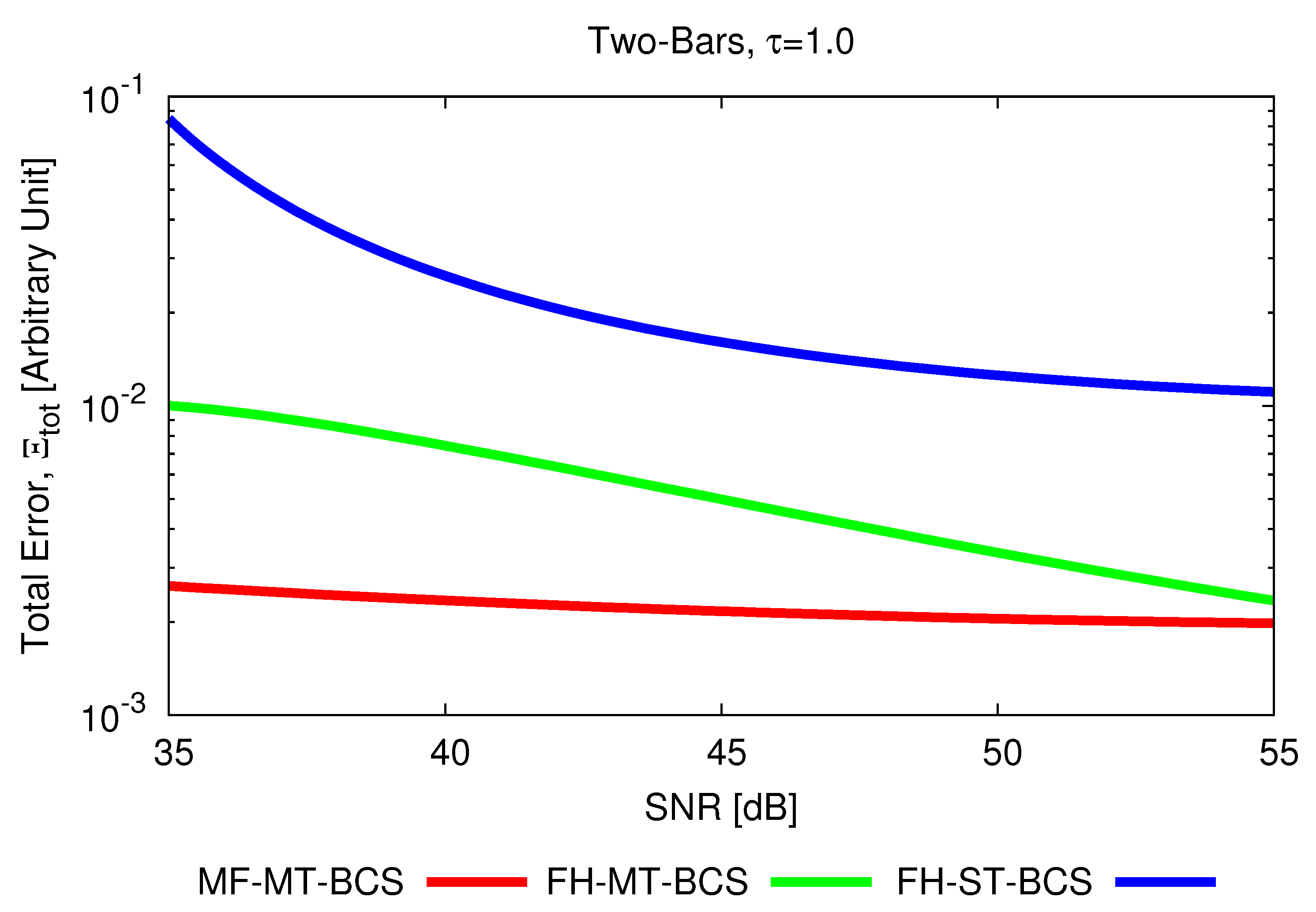
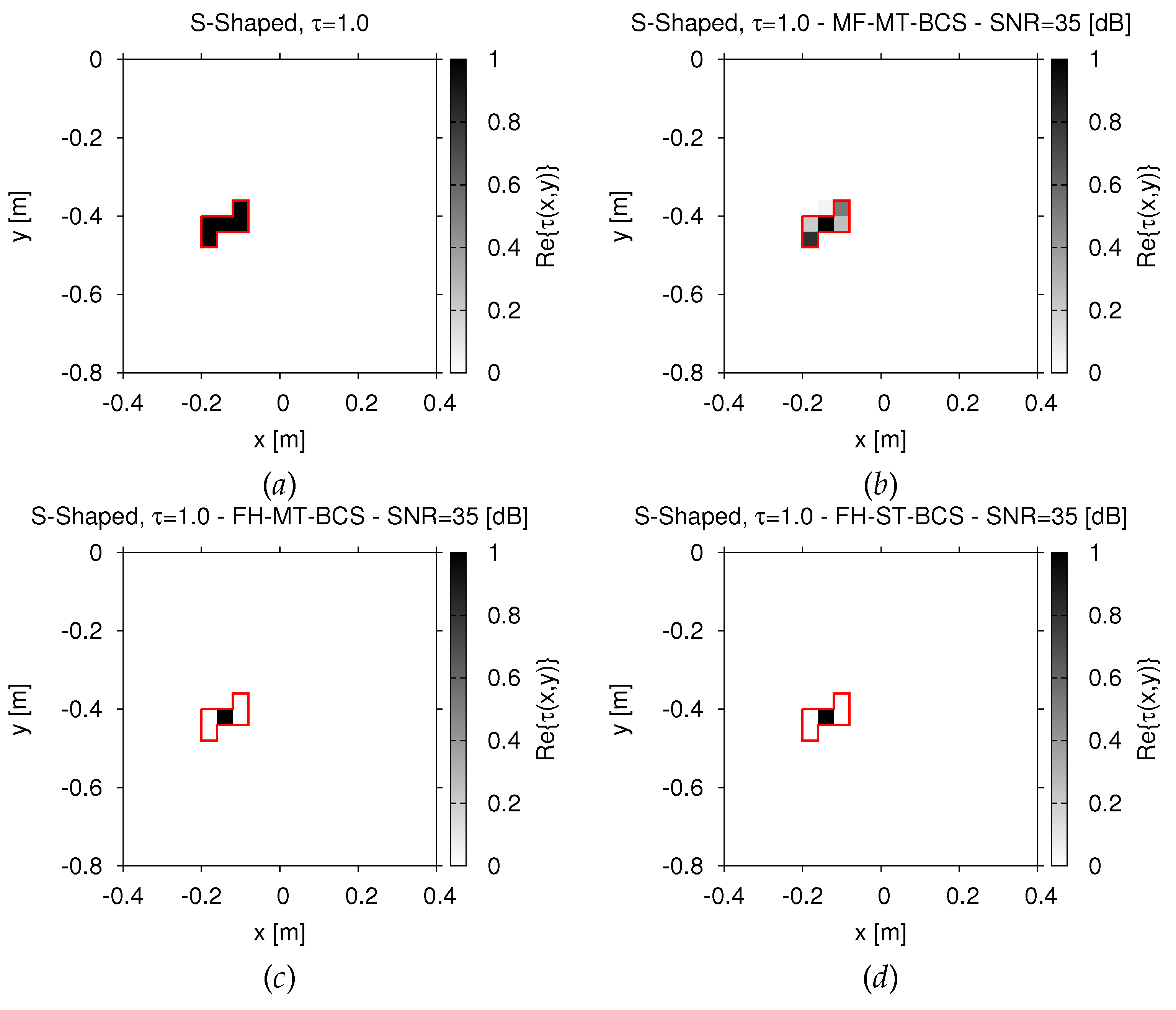
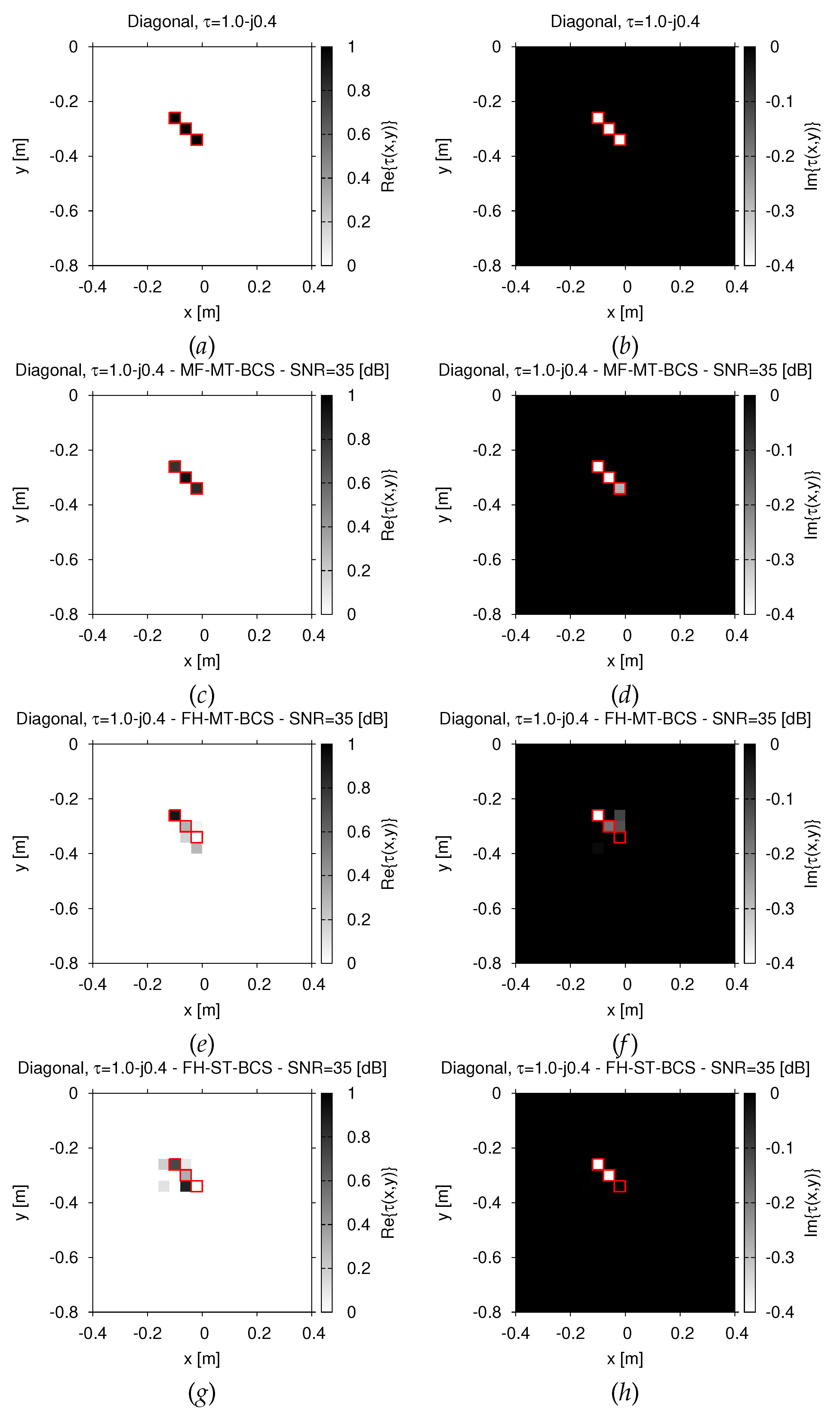
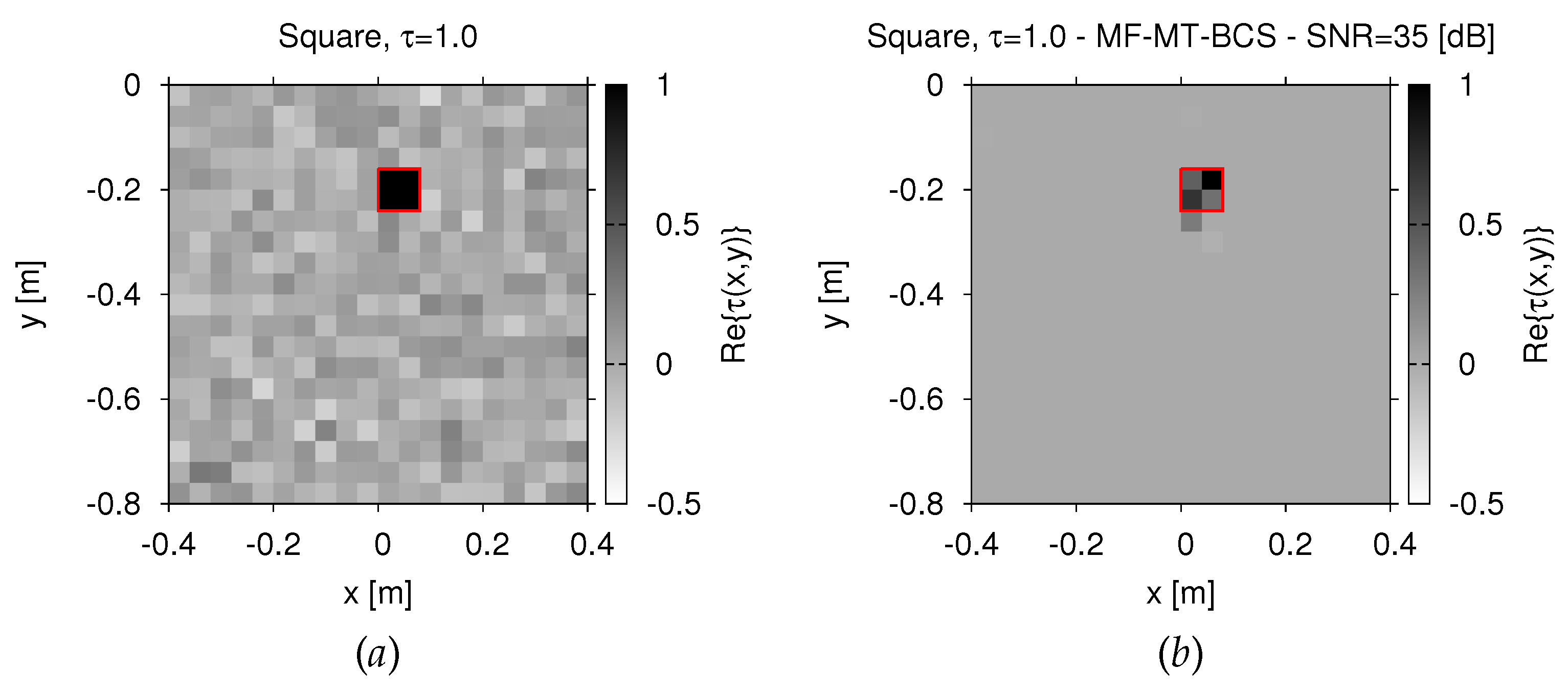
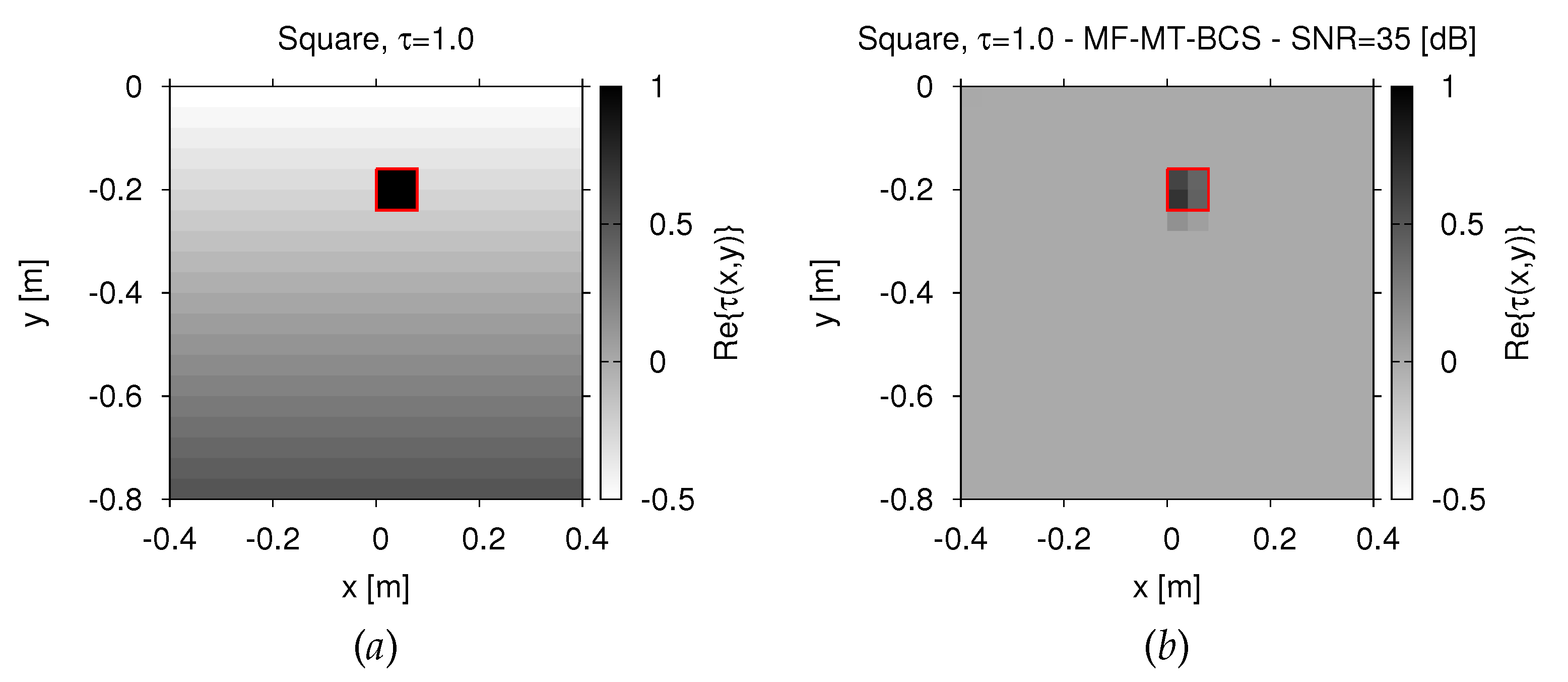

| MF-MT-BCS | FH-MT-BCS | FH-ST-BCS | |
|---|---|---|---|
| (s) | 266 |
Publisher’s Note: MDPI stays neutral with regard to jurisdictional claims in published maps and institutional affiliations. |
© 2021 by the authors. Licensee MDPI, Basel, Switzerland. This article is an open access article distributed under the terms and conditions of the Creative Commons Attribution (CC BY) license (https://creativecommons.org/licenses/by/4.0/).
Share and Cite
Salucci, M.; Anselmi, N. Multi-Frequency GPR Microwave Imaging of Sparse Targets through a Multi-Task Bayesian Compressive Sensing Approach. J. Imaging 2021, 7, 247. https://doi.org/10.3390/jimaging7110247
Salucci M, Anselmi N. Multi-Frequency GPR Microwave Imaging of Sparse Targets through a Multi-Task Bayesian Compressive Sensing Approach. Journal of Imaging. 2021; 7(11):247. https://doi.org/10.3390/jimaging7110247
Chicago/Turabian StyleSalucci, Marco, and Nicola Anselmi. 2021. "Multi-Frequency GPR Microwave Imaging of Sparse Targets through a Multi-Task Bayesian Compressive Sensing Approach" Journal of Imaging 7, no. 11: 247. https://doi.org/10.3390/jimaging7110247
APA StyleSalucci, M., & Anselmi, N. (2021). Multi-Frequency GPR Microwave Imaging of Sparse Targets through a Multi-Task Bayesian Compressive Sensing Approach. Journal of Imaging, 7(11), 247. https://doi.org/10.3390/jimaging7110247







